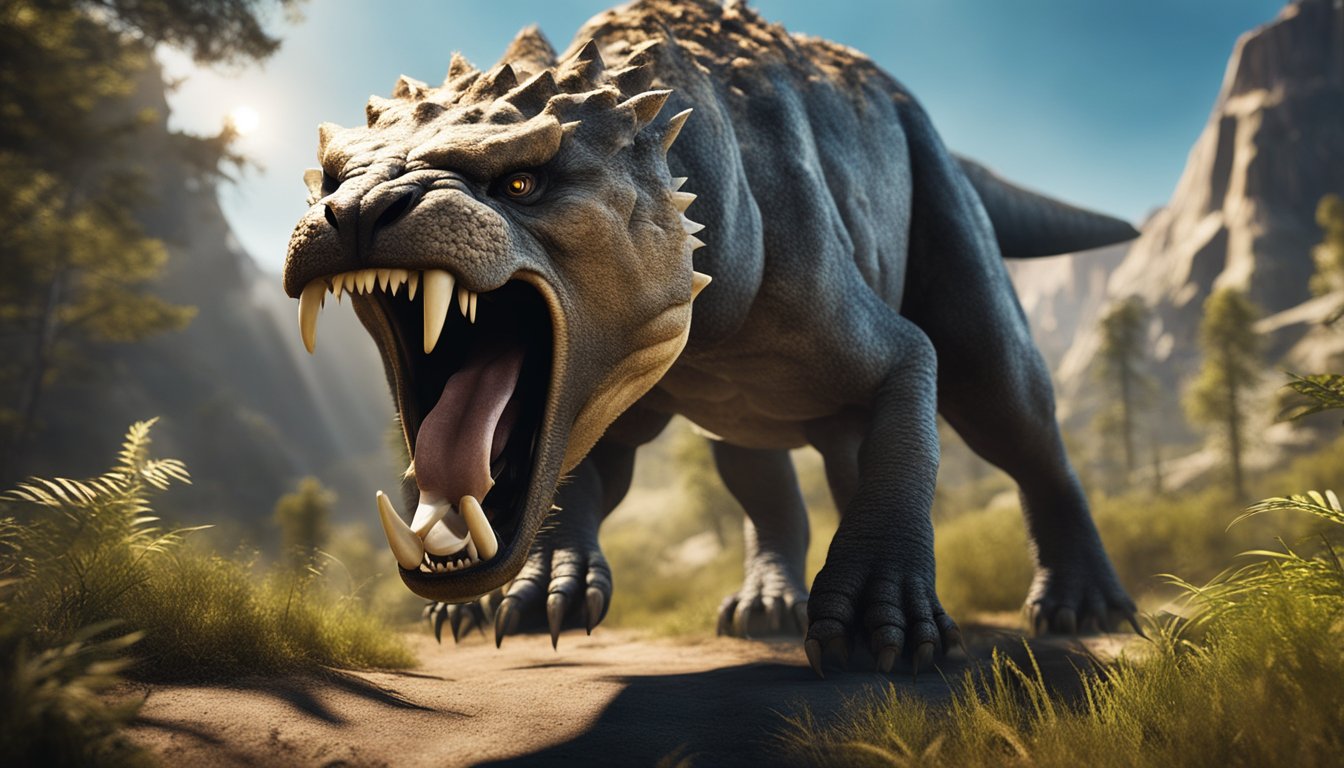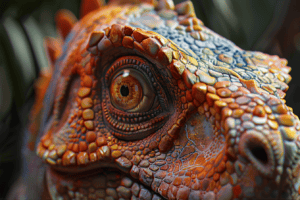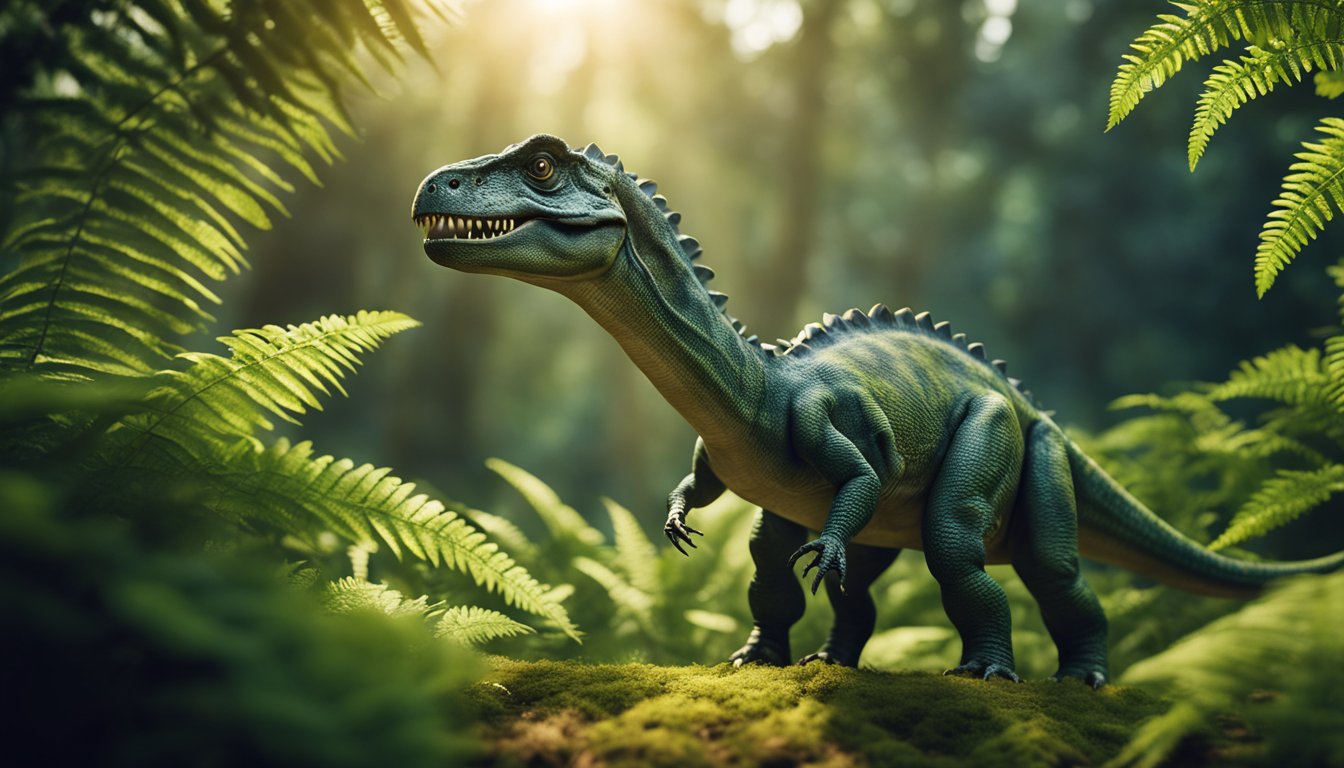Gorgonopsids were fierce predators that roamed the earth long before the age of the dinosaurs.
These saber-toothed creatures were the dominant species on the planet during the Permian period, which lasted from 299 million to 251 million years ago.
Despite their fearsome reputation, however, gorgonopsids eventually went extinct, leaving behind only fossils and the mystery of their existence.

Gorgonopsids were not dinosaurs, but rather a type of mammal-like reptile known as a therapsid.
They were characterized by their long, saber-like teeth, which they used to catch and kill their prey.
Some gorgonopsids were as large as tigers, while others were small and agile, able to hunt and evade predators with ease.
Despite their diversity, however, all gorgonopsids shared a common trait: they were apex predators, at the top of the food chain in their respective ecosystems.
Today, scientists continue to study gorgonopsids to learn more about their biology and behavior.
By examining fossils and reconstructing their anatomy, researchers have been able to piece together a picture of what life was like for these prehistoric creatures.
While much remains unknown about gorgonopsids, their legacy as one of the most fearsome predators in the history of the planet is secure.
Unveiling the Gorgonopsid
The Gorgonopsid was a fierce predator that roamed the Earth over 250 million years ago, long before the age of the dinosaurs.
These Saber-Toothed beasts were the apex predators of the Permian, and their defining characteristics made them stand out from other animals of the time.
Defining Characteristics
The Gorgonopsids were a group of proto-mammals that included the first Saber-Toothed predators on the planet.
They had a distinctive skull shape with large eye sockets and powerful jaws that were lined with razor-sharp teeth.
The most prominent feature of the Gorgonopsid was its long, curved Saber-Tooth, which protruded from its upper jaw and was used to capture prey.
Habitat and Geographic Spread
Gorgonopsids were found in different parts of the world, including Africa and Russia.
Fossils of these creatures have been discovered in South Africa’s Karoo Basin, which was known to have supported a variety of early Saber-Toothed predators.
These creatures migrated thousands of miles across Pangaea, filling a gap left by extinct top predators in a far-flung ecosystem before becoming extinct themselves.
The Apex Predators of the Permian
Gorgonopsids were the apex predators of the Permian, and they ruled the food chain with their ferocity and strength.
These creatures were not only skilled hunters but also highly adaptable, enabling them to survive in different environments and climates.
The Gorgonopsids were the top predators of their time, and their reign lasted for millions of years before they disappeared from the face of the Earth.
Fun Fact: The name Gorgonopsid means “Gorgon Face” in Greek, referring to the creature’s fearsome appearance.
In conclusion, the Gorgonopsid was a fascinating and formidable predator that played a vital role in the evolution of life on Earth.
Despite their extinction, their legacy lives on, and their fossils continue to provide valuable insights into the history of our planet.
Life and Extinction

Daily Life and Hunting Tactics
Gorgonopsids were fearsome predators that lived before the age of dinosaurs.
These carnivorous beasts roamed the Earth during the Permian period, over 250 million years ago.
They were the apex predators of their time, with sharp saber-like teeth that were used to tear through flesh and bone.
Gorgonopsids were well adapted to their environment, with keen senses and powerful bodies.
They were about the size of a tiger and had tough skin similar to a rhinoceros or elephant.
Their bodies were designed for speed and agility, allowing them to chase down prey with ease.
They were also incredibly intelligent, using their wits and cunning to outsmart their prey.
When hunting, gorgonopsids would use their sharp teeth to bite into the neck of their prey, severing the spinal cord and killing it instantly.
They were also known to use their powerful jaws to crush bones, making it easier to access the nutrient-rich marrow inside.
The Great Dying: Mass Extinction Event
Unfortunately, the reign of the gorgonopsids was short-lived, as they were wiped out during the Permo-Triassic mass extinction event.
This event was one of the most catastrophic in the history of life on land, with over 90% of all species going extinct.
The cause of the mass extinction is still debated, but it is believed to have been caused by a combination of factors, including volcanic activity, climate change, and asteroid impacts.
Whatever the cause, it had a devastating impact on the ecosystem, wiping out entire populations of animals and plants.
The gorgonopsids were among the casualties of the mass extinction event, unable to adapt to the rapidly changing environment.
Their disappearance left a void in the ecosystem, which was eventually filled by the dinosaurs, who went on to dominate the Earth for millions of years.
Despite their short reign, the gorgonopsids have left a lasting impression on the history of life on land.
Their sharp teeth and powerful bodies serve as a reminder of the fierce predators that once roamed the Earth.
Scientific Discovery and Study

Fossil Discoveries
Gorgonopsids, the saber-toothed predators that roamed the earth before the dinosaurs, have long fascinated scientists and the public alike.
These ancient creatures, which lived over 250 million years ago, were characterized by their massive jaws, sharp teeth, and powerful muscles.
Thanks to the discovery of several well-preserved fossils, scientists have been able to study the anatomy and behavior of gorgonopsids in great detail.
Some of the most significant fossil discoveries have been made in South Africa, where paleontologists from the University of the Witwatersrand in Johannesburg have unearthed several complete skeletons of gorgonopsids.
One of the most important fossils is that of a gorgonopsid named Inostrancevia, which was discovered in Russia.
This fossil has provided scientists with valuable insights into the anatomy and behavior of gorgonopsids, including their hunting tactics and social behavior.
Research and Understanding
The study of gorgonopsids has been a major focus of evolutionary studies institutes around the world.
Researchers at the North Carolina Museum of Natural Sciences and the Field Museum in Chicago have been particularly active in this field.
Christian Kammerer, a paleontologist at the North Carolina Museum of Natural Sciences, has been studying gorgonopsids for over a decade.
His research has focused on the evolutionary relationships between gorgonopsids and other prehistoric predators, as well as their ecological roles.
Kammerer has also been involved in the discovery and analysis of several gorgonopsid fossils, including a new species named Aelurognathus.
Overall, the study of gorgonopsids has provided scientists with valuable insights into the evolution and behavior of prehistoric predators.
By analyzing their fossils and studying their anatomy, researchers have been able to piece together a more complete picture of life on Earth before the dinosaurs.
Frequently Asked Questions

How big were the Gorgonopsids compared to other prehistoric predators?
Gorgonopsids were one of the largest predators of their time, with some species growing up to 10 feet long and weighing over 500 pounds.
This made them larger than many other prehistoric predators, including some of the early dinosaurs.
What did Gorgonopsids typically eat during their time on Earth?
Gorgonopsids were apex predators and hunted a variety of prey, including other large herbivorous animals.
They had powerful jaws and sharp teeth, which they used to tear flesh and crush bones.
Some researchers believe that they may have been scavengers as well.
Are Gorgonopsids related to any animals living today?
Gorgonopsids are not related to any animals living today.
They were part of a group of animals called therapsids, which were early mammal-like reptiles that lived during the Permian and Triassic periods.
What era did Gorgonopsids live in, and why aren’t they around anymore?
Gorgonopsids lived during the Permian period, which was over 250 million years ago.
They went extinct along with many other animals during the Permian-Triassic extinction event, which was the largest mass extinction in Earth’s history.
The exact cause of their extinction is still unknown, but it is believed to have been caused by a combination of factors, including climate change, volcanic activity, and asteroid impacts.
Did Gorgonopsids have fur, and what did they look like?
Gorgonopsids did not have fur. Instead, they had scaly skin and a distinctive pair of elongated canine teeth that protruded from their upper jaws.
They had a broad skull and a muscular body, which made them well-suited for hunting and killing large prey.
How does the Gorgonopsid compare to the saber-toothed cats we’re more familiar with?
While both Gorgonopsids and saber-toothed cats were predators with elongated canine teeth, they are not closely related.
Saber-toothed cats lived millions of years after Gorgonopsids went extinct and were part of a different group of animals called felids.
Saber-toothed cats also had a more specialized diet, primarily hunting large herbivores such as mammoths and bison.







